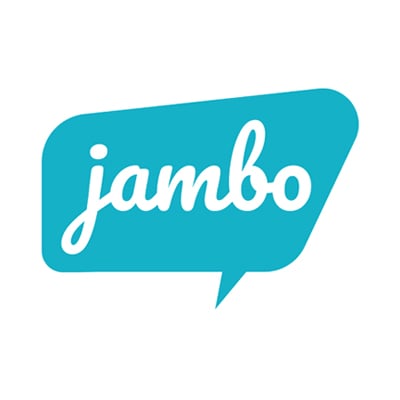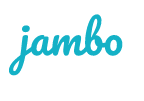
While Stakeholder Relationship Management (SRM) software aims to make stakeholder management easier and more efficient, not all SRM software is created similarly, and some platforms can have their fair share of problems.
For this blog, we've identified six common problems with Stakeholder Relationship Management software and the main reasons implementing it fails. We have also provided solutions to avoid these problems and ensure you choose your organization's best stakeholder management software.
6 common Stakeholder Relationship Management software problems
The following are some of the common problems you may encounter if you don't choose the right stakeholder relationship management software:
Problem 1: Implementation and data migration
Software implementation is the process of effectively deploying the new software to meet the organization's needs (this includes setup, workflows, training, etc.). Additionally, with SRM software, there's often a data migration process where an organization may need to import its existing data into the system.
The problem is that implementation and data migration aren't always easy or successful. If these processes are done poorly, it can affect the organization's operating times, adoption rates and overall efficiency.
Solution:
Do your research. Choose a software vendor with a clear and well-thought-out implementation plan.
To evaluate their implementation process, consider asking questions around:
- Implementation timelines
- Data import (i.e. importing contacts or communication records)
- Legacy system data migration (i.e. from other systems)
- Training and support options
Choose an SRM vendor who can clearly answer these questions and in a way that best meets your organization's needs.
Did you know?
We have successfully migrated customers and their data from various platforms, including spreadsheets, SharePoint, CRM systems, and other stakeholder relationship management software.
 Problem 2: Low adoption rates
Problem 2: Low adoption rates
We all know the saying, "Old habits die hard." When you ask your team to use new software, this transition can be challenging. Either your team was used to the old process, they find the new tool overwhelming or confusing, or they haven't been taught how to use it properly.
When stakeholder relationship management software is too confusing or time-consuming, teams will avoid using it altogether, and your organization's stakeholder data will be saved everywhere but in the software (like laptops, external hard drives, USBs, or notepads).
Having your stakeholder data in different areas puts your organization at risk, as it can leave potentially sensitive data out in the open. It's also dangerous for your project, as gaps in data can have legal consequences if you're asked to run a report on all your data and you can't because you don't know where it is.
Solution:
So, how do you get your team to actually use new software?
Look for an SRM that is easy to use and understand so that your team will enjoy using it. Book a team demo to evaluate its design and ease of use to see if the software fits your team.
Discover four tips that will help you gain team buy-in for SRM software→
Problem 3: Not user-friendly
As mentioned with adoption rates, user-friendly software is much more likely to be used quickly and effectively; however, it's one thing to make software that works, and it's another to create software that people enjoy using.
User-friendly SRM requires a development team that understands coding, design, and how people interact with information within the system.
Consider the following elements that can help make an SRM user-friendly:
- Has stakeholder-focused workflows
- Designed with the user experience in mind (i.e. the way you do your job)
- Designed with industry input to answer your questions
- Easy to troubleshoot any issues or bugs
- Designed to be scalable, to meet your organization's growing needs
- Easy to navigate and learn
- Cloud-based accessibility
- Auto-updated without any work required on your end
Solution:
Look for an SRM that looks good and is well-designed.
An SRM is intended to keep your team organized, informed, and ready to manage engagement and consultation activities, so it isn't worth the investment if it cannot do so. For user-friendly software, ask for a team demo to see how easy the software is to navigate and evaluate the design with the checklist above, or download our comprehensive, free SRM buyer's checklist below!
Problem 4: Limited customer support
This ties into what we've been discussing above, but it's important to highlight on its own: software that doesn't have a support team dedicated to your success is a huge roadblock for your team and your stakeholder engagement plans.
By using an SRM, you hope to mitigate many challenges associated with stakeholder management. However, if you can't understand how the software works or where to find the information you need, you're not getting full value out of the software.
Solution:
As mentioned above, sign up for a demo and evaluate the SRM software. Ask questions about the level of support provided and the training opportunities offered.
Consider:
- How long does it take to be fully trained on the software?
- What if you have a question? How do you contact the support team? (Is there a support ticket service? How quickly can you expect a response, etc.?)
- Are there future-focused training opportunities?
- Will the customer support team check in on you and your team periodically?
Remember, SRM support and training are just as crucial as SRM design.

Problem 5: No future-focused maintenance
While software is often exciting when we first purchase it, what happens as our industries change and technology advances?
With “set it and forget it” software, no real emphasis on product and feature updates or future maintenance, so this software won't be improved or advanced to meet your future needs. This is common with CRM software, where users try to customize it to work as an SRM. This is problematic as these CRM customizations are often very costly, there's no future stakeholder engagement support or maintenance with these types of systems (not to mention that CRMs are built to manage customers and sales, not stakeholders and your relationships with your stakeholders).
Want to learn more about the difference between CRM and SRM software? Check out the video below→
Without updates, new and better SRM tools will sweep the market, making you wish you had opted for a software vendor interested in keeping up to date with industry changes.
Solution:
Choose an SRM provider that's committed to:
- Feature updates
- Continual bug fixes (with an option to report bugs)
- Software upgrades
- Continually learning about stakeholder engagement advancements and expectations.
Problem 6: The SRM doesn't tell the whole story

An SRM is a centralized place to store all your stakeholder information, but having a space to store all your data is only half the story; how you use that information is equally important.
Many options on the market today have comparable features, such as issues and commitments management, contact profiles, communication tracking, tasks, etc., but a few possibilities have critical elements like traceability.
What is traceability?
Traceability is linking all your stakeholder information together, helping you quickly build a full understanding of your stakeholders and engagement projects.
For example, with some SRMs that have traceability, you can click on a stakeholder profile to access all previous engagement information, such as communications you've had with them, details of issues they were involved in, commitments you made to them, or team tasks associated with them. Or you can find a commitment or a task. You can easily see the original communication where it was first created, the related issues on that engagement, etc.
This ability for all your information to connect and tell a story is vital in stakeholder engagement. You need this information when running reports or keeping your team informed. This information also helps you decide what to do next in your stakeholder engagement plan and where to invest vital resources.
Your SRM should be able to tell you exactly what you need to know when you need it without having to dig.
Learn about the five ways SRM traceability helps you see the big picture in stakeholder engagement→
Solution:
Look for stakeholder relationship management software that offers traceability. The vendor's website will mention this, but you can also ask the vendor directly.
Next steps
Some inevitable challenges and difficulties arise when we change an old habit and adopt new tools; however, you can minimize these stakeholder management challenges by choosing a well-designed SRM with a support team dedicated to the organization's success.
To help you understand what questions you should consider when choosing an SRM, check out our free downloadable checklist for SRM software buyers.
What is the fastest and easiest stakeholder relationship management software?
Jambo is the fastest and easiest Stakeholder Relationship Management software today. It is solution-focused and designed to meet stakeholder engagement needs, created with input from private companies, governments, NGOs, and engagement consultants.
To see how Jambo can help your organization streamline and simplify your stakeholder engagement efforts, book a 15-minute discovery call with a Jambo expert.










